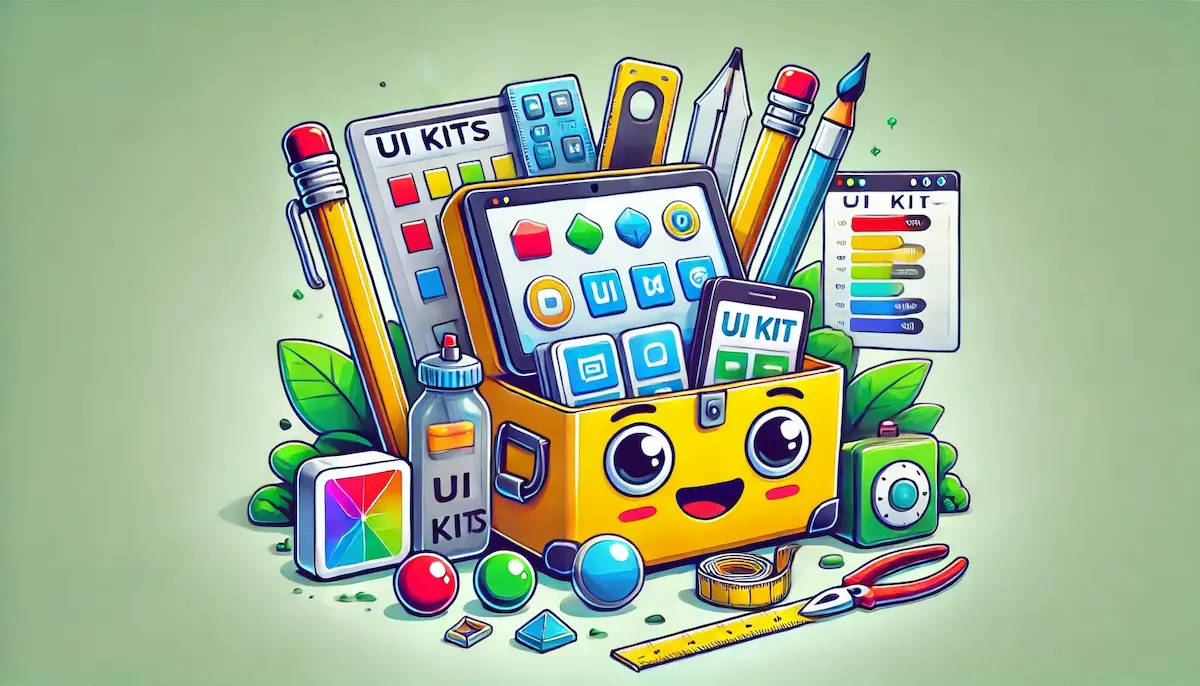UI kits, or User Interface kits, are collections of pre-designed elements and components that are used to build user interfaces for digital products. These kits provide a variety of ready-made UI elements such as buttons, icons, typography, grids, and templates, which help designers create consistent and visually appealing interfaces more efficiently.
What is a UI Kit?
A UI kit is a comprehensive set of design resources that streamline the process of creating user interfaces. It includes a range of elements like:
- Buttons and Icons: Standardized buttons and icons for various functions.
- Typography: Predefined text styles and font choices.
- Forms and Input Fields: Designed forms, checkboxes, radio buttons, and input fields.
- Navigation: Menus, tabs, and navigation bars.
- Grids and Layouts: Grid systems and layout templates for organizing content.
- Modals and Popups: Templates for modal windows and pop-up alerts.
- Color Palettes: Suggested color schemes for consistent branding.
The Importance of UI Kits
UI kits are essential for several reasons:
- Efficiency: They save time by providing ready-made components, allowing designers to focus on higher-level design decisions rather than creating elements from scratch.
- Consistency: UI kits ensure a consistent look and feel across different parts of the product, which is crucial for user experience and brand identity.
- Collaboration: They facilitate better collaboration between designers and developers by providing a common set of design elements.
- Prototyping: UI kits make it easier to create high-fidelity prototypes quickly, which can be used for user testing and feedback.
- Scalability: They allow for the easy expansion and updating of designs, making it simple to add new features or redesign parts of the interface.
Key Components of a UI Kit
A comprehensive UI kit typically includes the following components:
1. Basic UI Elements
- Buttons: Various button styles for different actions.
- Icons: A set of icons for common functions like search, settings, and notifications.
- Forms: Input fields, dropdowns, checkboxes, and radio buttons for forms.
- Typography: Predefined text styles, including headings, body text, and captions.
- Grids and Layouts: Grid systems and layout templates to organize content.
2. Navigation Components
- Menus: Dropdown menus, sidebars, and top navigation bars.
- Tabs: Tabbed navigation for organizing content into sections.
- Breadcrumbs: Navigation aids that show the user’s location within the site hierarchy.
3. Interactive Components
- Modals: Pop-up windows for alerts, confirmations, and forms.
- Tooltips: Small, hover-activated pop-ups that provide additional information.
- Loading Indicators: Spinners, progress bars, and other indicators for loading states.
4. Visual Components
- Color Palettes: Suggested color schemes for consistent branding.
- Images and Illustrations: Placeholder images and illustrations to enhance visual appeal.
- Cards: Styled containers for presenting content in a visually appealing way.
Popular UI Kits
There are numerous UI kits available, both free and premium, that cater to different design needs. Some popular UI kits include:
- Material Design Kit: Based on Google’s Material Design guidelines, this kit offers a comprehensive set of components and templates for creating modern, consistent interfaces.
- Bootstrap UI Kit: A popular framework for building responsive web applications, Bootstrap provides a vast collection of pre-designed elements and components.
- Ant Design: A UI kit and design language for enterprise-level applications, offering a range of components and best practices for building high-quality interfaces.
- iOS Human Interface Guidelines: Apple’s official UI kit for designing applications for iOS, providing standard components and design principles.
- Figma UI Kits: A variety of UI kits available within Figma, a collaborative design tool, covering different styles and purposes.
How to Use a UI Kit
Using a UI kit involves several steps:
- Choose a UI Kit: Select a UI kit that matches your project’s needs and design style. Consider factors like compatibility with your design tool and the comprehensiveness of the kit.
- Customize Components: Adapt the components to fit your specific design requirements. Customize colors, typography, and other styles to match your brand.
- Integrate with Design Tools: Import the UI kit into your preferred design tool, such as Sketch, Figma, or Adobe XD. Most UI kits are available in formats compatible with these tools.
- Build Prototypes: Use the components from the UI kit to create high-fidelity prototypes. This helps in visualizing the final product and gathering user feedback.
- Collaborate with Developers: Share the UI kit and prototypes with developers to ensure a smooth handoff and consistent implementation.
Conclusion
UI kits are invaluable resources for designers, providing ready-made components and templates that enhance efficiency, consistency, and collaboration. By leveraging UI kits, designers can focus on creating user-centered interfaces that are visually appealing and functional.
Blockfine thanks you for reading and hopes you found this article helpful.
